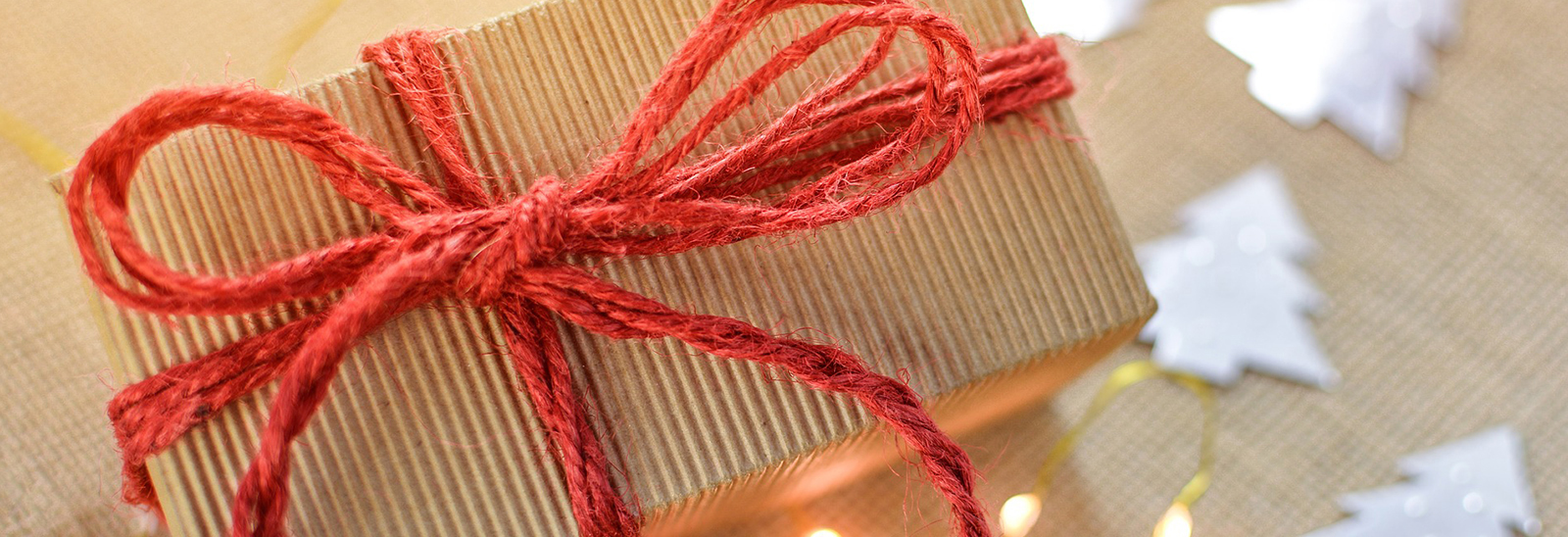December 5, 2017
10 Tips for a Sustainable Holiday Season

It’s official! The holiday season is in full swing! Retail parking lots are full and lines are long as millions of revelers across the nation are shopping for gifts, decorations, and party supplies. There’s no doubt that the holidays are a wondrous time of the year; unfortunately, they are also the most wasteful.
Americans produce an extra 1 million tons of solid waste each week between Thanksgiving and New Year’s Day, according to California’s Department of Resources Recycling and Recovery, or CalRecycle. Everything from wrapping paper and ribbons to disposable plastic ware ends up in the trash.
“Packaging becomes a large portion of extraneous waste that we generate during the holidays. Packaging from presents, food, and decorations can quickly add up,” said Danielle Thayer, an environmental planner with GPA Consulting. Thayer developed GPA’s Sustainability Committee and currently serves as the committee’s chair. “Focus on using reusable containers for gifts, food, and knick-knacks, and try to purchase items in bulk. Avoid using polystyrene containers, as polystyrene takes 500 years or more to decompose in a landfill on average. Instead, opt for products made of biodegradable materials or recycled paper.”
To help keep holidays more environmentally friendly, GPA has compiled a list of tips to reduce waste.
10 of Ways to Reduce Waste This Holiday Season
1) When it comes to gift-giving, think beyond fads and kitschy or joke gifts that often end up in the trash. Tickets (movie, concert, or sports), gift certificates (restaurants, theme parks, zoos, museums, or retail), and memberships or subscriptions (clubs, online publications or streaming services), make great gifts and have no packaging to toss. Plants or seeds also make great gifts.
2) Tickets and gift cards require little to no wrapping. However, if need to wrap larger gifts, get creative with wrapping materials can be reused, repurposed, or recycled. These materials can include brown packing paper, newspaper, magazine pages, reusable shopping bags, fabric, cloth ribbons or yarn, natural items like pine cones, or ornaments. Let your creativity loose!
3) If you do use traditional wrapping paper, look for paper that is made of recycled materials, and carefully unwrap gifts and save the paper for next year.
4) Institute a one-gift rule. This not only reduces waste but also decreases stress on you and your wallet.
5) Think energy efficiency. Choose solar-powered products over battery-powered ones; look for the Energy Star—which is the seal of approval on products that provide efficient use of power—on your decorations, lights, and appliances. And, don’t forget turn off holiday lights and power down outdoor animatronics before you go to bed—or, use timers to power them down for you.
6) Receiving piles of catalogs and sales flyers? Call the companies’ customer service departments and ask to be removed from their mailing lists.
7) Send digital cards rather than paper cards. (Another money saver!) But, if you prefer paper cards, look for ones made of recyclable paper and environmentally friendly inks. Avoid glossy or foil coatings, as these cannot be recycled.
8) A live, potted tree is the eco-friendliest choice for a Christmas. If this service is not available, the next best choice is a fresh cut tree from a local tree farm. Just remember to compost or recycle cut trees after the holidays are over. Forego flocking! Flocked trees cannot be recycled or composted. Artificial trees may seem like an excellent choice, but the needles are made of polyvinyl chloride, which is a toxic substance. Artificial trees are not recyclable and not built to last. If you choose an artificial tree, look for a high-quality one that will last 10 or 15 years.
9) For decorations, opt for natural materials like wood, burlap, or organic cotton. Collect small branches or pine cones during your walks in nature, which, according to many health studies, reduces stress and increases brain function. When choosing candles, look for ones made from soy or beeswax rather than paraffin, which is made from petroleum byproduct.
10) When entertaining guests at holiday events, use plates, glasses, and cutlery that can be washed and re-used. If you do use plastic ware, most of it is not disposable but is durable and can be washed and re-used. Make sure guests know this and ask that they not throw durable plastic in the trash. And set out a bin for recycling, clearly marked for guests.
Here’s wishing everyone a happy, and sustainable, holiday!
Danielle Thayer is an environmental planner at GPA Consulting who contributes her knowledge in environmental law and policy, biology, and planning to a variety of projects. Her work includes transportation and development projects for cities, counties, and agencies throughout California, with a focus on California Department of Transportation Local Assistance. Danielle previously worked with federal and state agencies to craft environmental guidance documentation, pollution prevention plans, stormwater technical studies, educational media, environmental analysis support, and more during her time with the U.S. Army Corps of Engineers.
(Tips compiled from CalRecycle, Stanford University, National Geographic, and Sustainable Baby Steps)